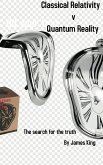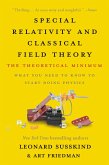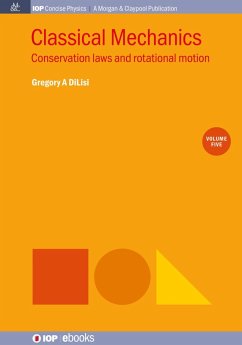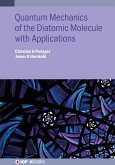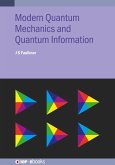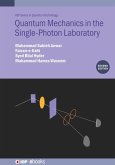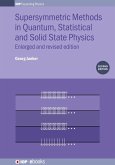Quantum and classical results are often presented as being dependent upon separate postulates as if the two are distinct and unrelated, and there is little attempt to show how the quantum implies the classical. A unified presentation offers conceptual insight into our world, unique molecular explanations for measured phenomena, and new algorithms for quantum statistical mechanics, an important subject hitherto limited computationally by its intractable scaling with system size. The transformation to classical phase space gives researchers access to a range of approaches derived from classical statistical mechanics that promise results on much more favourable numerical terms.
Quantum Statistical Mechanics in Classical Phase Space offers not just a new computational approach to condensed matter systems, but also a unique conceptual framework for understanding the quantum world and collective molecular behaviour. A formally exact transformation, this revolutionary approach goes beyond the quantum perturbation of classical condensed matter to applications that lie deep in the quantum regime. It offers scalable computational algorithms and tractable approximations tailored to specific systems. Concrete examples serve to validate the general approach and demonstrate new insights. The harmonic oscillator free energy is derived as a permutation loop expansion resulting from the symmetrisation of the wave function. For the ideal gas, the boson and fermion occupancy rules are generalized to the classical phase space continuum. For interacting quantum particles, the Heisenberg uncertainty principle is reconciled with a position-momentum point in classical phase space. A detailed study of the ¿-transition in liquid helium provides molecular insight into Bose-Einstein condensation and superfluid flow. Computer simulations and analysis show the role of position and momentum permutation loops in the ¿-transition. The non-local nature of momentum loops provides the physical basis for superfluid flow, with the predicted critical velocity in agreement with measured values.
The intriguing classical phase space formulation in this book offers students and researchers a range of new computational algorithms and analytic approaches. It offers not just an efficient computational approach to quantum condensed matter systems, but also an exciting perspective on how the classical world that we observe emerges from the quantum mechanics that govern the behaviour of atoms and molecules. The applications, examples, and physical insights foreshadow new discoveries in quantum condensed matter systems.
Quantum Statistical Mechanics in Classical Phase Space offers not just a new computational approach to condensed matter systems, but also a unique conceptual framework for understanding the quantum world and collective molecular behaviour. A formally exact transformation, this revolutionary approach goes beyond the quantum perturbation of classical condensed matter to applications that lie deep in the quantum regime. It offers scalable computational algorithms and tractable approximations tailored to specific systems. Concrete examples serve to validate the general approach and demonstrate new insights. The harmonic oscillator free energy is derived as a permutation loop expansion resulting from the symmetrisation of the wave function. For the ideal gas, the boson and fermion occupancy rules are generalized to the classical phase space continuum. For interacting quantum particles, the Heisenberg uncertainty principle is reconciled with a position-momentum point in classical phase space. A detailed study of the ¿-transition in liquid helium provides molecular insight into Bose-Einstein condensation and superfluid flow. Computer simulations and analysis show the role of position and momentum permutation loops in the ¿-transition. The non-local nature of momentum loops provides the physical basis for superfluid flow, with the predicted critical velocity in agreement with measured values.
The intriguing classical phase space formulation in this book offers students and researchers a range of new computational algorithms and analytic approaches. It offers not just an efficient computational approach to quantum condensed matter systems, but also an exciting perspective on how the classical world that we observe emerges from the quantum mechanics that govern the behaviour of atoms and molecules. The applications, examples, and physical insights foreshadow new discoveries in quantum condensed matter systems.
Dieser Download kann aus rechtlichen Gründen nur mit Rechnungsadresse in A, D ausgeliefert werden.



